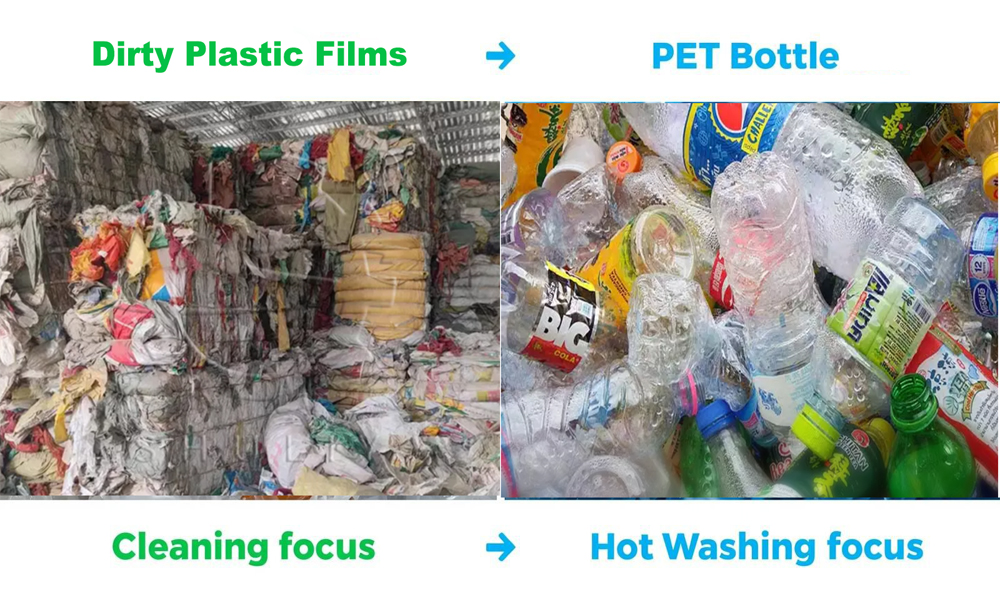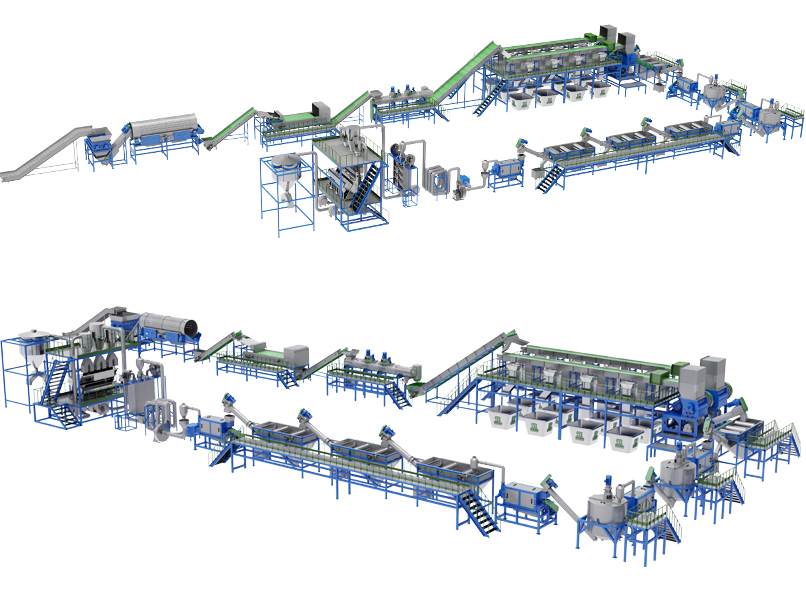News
Plastic Film Washing Line VS PET Bottle Washing Line?
In the growing field of plastic recycling, choosing the right washing line is essential for achieving high-quality recycled materials. Two of the most widely used systems are the Plastic Film Washing Line and the PET Bottle Washing Line.
Although they share the same purpose — turning waste plastic into clean, reusable flakes — their design, equipment configuration, and processing methods are quite different. Understanding these differences helps recyclers select the right system for their production needs.
This article explores the main differences between plastic film washing line and PET bottle washing line, from material type to the machine equipments and to the final pellets, and how to select the right plastic washing line to fit your requirements.
1.Material Type:
Plastic Film Washing Line: Handles soft, lightweight, and flexible materials such as LDPE, LLDPE, HDPE film, stretch film, packaging film, agricultural film, and shopping bags.
PET Bottle Washing Line: Specially designed for rigid and solid materials like used PET bottles (water bottles, beverage bottles, etc.).
The washing processes for plastic films (primarily PE/PP) and PET bottles differ significantly due to the distinct physical properties of the materials and the types of contaminants they carry.

The specific differences span pre-processing, core cleaning steps, separation methods, dehydration and drying, as well as process intensity. Here is a detailed breakdown:
Key machine system differences:
1. Crushing and Feeding
-
Plastic Film Washing Line: Uses belt conveyors and film shredders or crushers with gentle feeding systems to prevent film wrapping and clogging.
-
Plastic PET Bottle Washing Line: Uses stronger crushers to break rigid bottles into flakes, often after label removal and pre-sorting.
2. Washing Process
-
Plastic Film Washing Line: Requires friction washing and multiple floating and hot washing tanks to remove dirt, oil, and sand because films are often contaminated with soil and dust.
-
Plastic PET Bottle Washing Line: Focuses more on hot washing with caustic soda to remove glue, labels, and beverage residues.
3. Drying System
-
Plastic Film Washing Line: Uses high-speed friction dryers and hot air dryers to achieve a light, fluffy, and dry output.
-
Plastic PET Bottle Washing Line: Uses centrifugal dewatering machines and hot air dryers for dense PET flakes.
4. Final Output
-
Plastic Film Washing Line: Output: Clean and dry PE/PP film flakes ready for pelletizing.
-
Plastic PET Bottle Washing Line Output: High-quality PET flakes used for fiber production, PET sheet, or bottle-to-bottle recycling.
-

Yes, it also plays a key role in choosing between film and PET washing processes, with core differences in water/energy consumption, chemical use, waste generation, and emission control. Here's a detailed breakdown:
1. Water Consumption
2. Energy Use
3. Chemicals
4. Waste & Emissions
Whether you’re recycling soft plastic film or rigid PET bottles, having the right washing line makes all the difference in efficiency and product quality.
Zhangjiagang Allwin Machinery Co Ltd committed to helping our customers turn waste into value through advanced, eco-friendly recycling technology.Let’s work together for a cleaner and greener future.
Get in touch with our team to discuss your recycling project requirments today!
www.allwinrecycling.com whatsapp:+8613952443782




